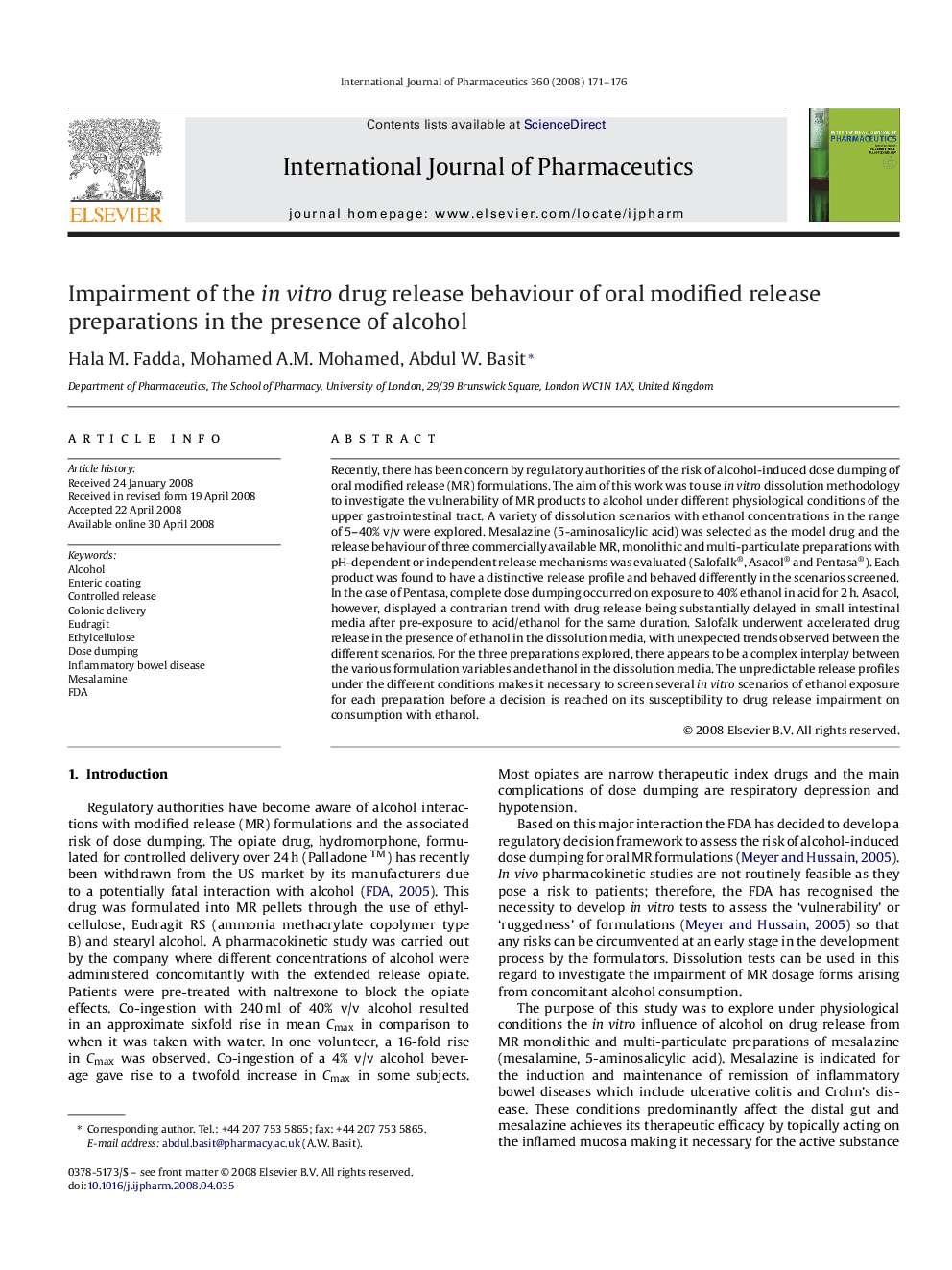| Article ID | Journal | Published Year | Pages | File Type |
|---|---|---|---|---|
| 2505106 | International Journal of Pharmaceutics | 2008 | 6 Pages |
Recently, there has been concern by regulatory authorities of the risk of alcohol-induced dose dumping of oral modified release (MR) formulations. The aim of this work was to use in vitro dissolution methodology to investigate the vulnerability of MR products to alcohol under different physiological conditions of the upper gastrointestinal tract. A variety of dissolution scenarios with ethanol concentrations in the range of 5–40% v/v were explored. Mesalazine (5-aminosalicylic acid) was selected as the model drug and the release behaviour of three commercially available MR, monolithic and multi-particulate preparations with pH-dependent or independent release mechanisms was evaluated (Salofalk®, Asacol® and Pentasa®). Each product was found to have a distinctive release profile and behaved differently in the scenarios screened. In the case of Pentasa, complete dose dumping occurred on exposure to 40% ethanol in acid for 2 h. Asacol, however, displayed a contrarian trend with drug release being substantially delayed in small intestinal media after pre-exposure to acid/ethanol for the same duration. Salofalk underwent accelerated drug release in the presence of ethanol in the dissolution media, with unexpected trends observed between the different scenarios. For the three preparations explored, there appears to be a complex interplay between the various formulation variables and ethanol in the dissolution media. The unpredictable release profiles under the different conditions makes it necessary to screen several in vitro scenarios of ethanol exposure for each preparation before a decision is reached on its susceptibility to drug release impairment on consumption with ethanol.
